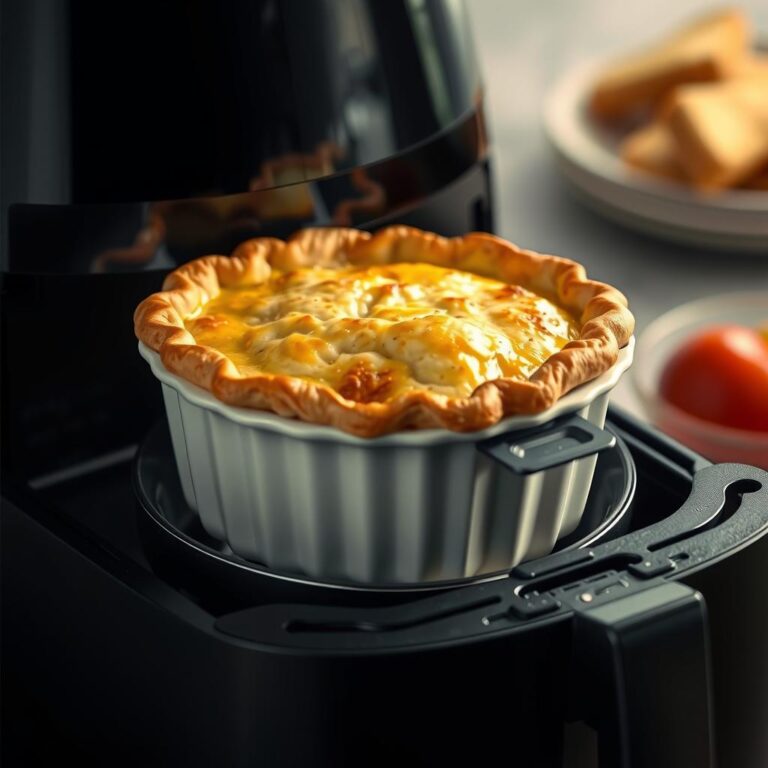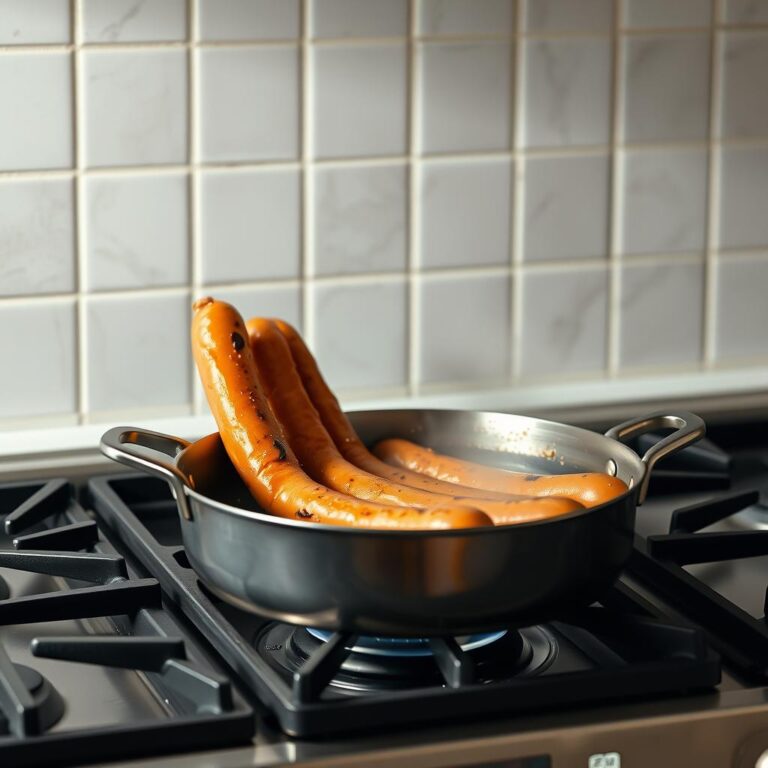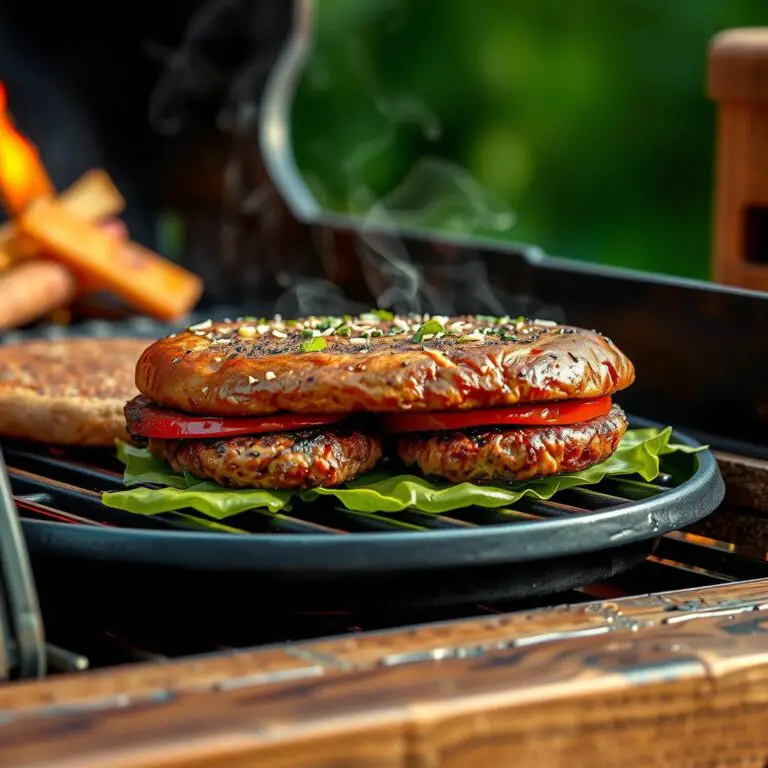Alright, let's dive into whether you can cook steak on a George Foreman grill.
Can you really cook steak on a George Foreman grill and get a decent result?
That's the question on every budget-conscious steak lover's mind.
I get it, you want a juicy, flavorful steak, but maybe you don't want the hassle of firing up the outdoor grill or dealing with a smoky kitchen.
Maybe you're living in an apartment where a full-sized grill isn't even an option.
Well, a George Foreman grill promises convenience and speed.
But does it deliver on steakhouse-quality results?
Let's break down the pros, the cons, and the secrets to making it work.
Is a George Foreman Grill a Viable Option for Cooking Steak?
The short answer? Yes, you can cook steak on a George Foreman grill.
But, and this is a big but, it's not going to replicate the experience of grilling over charcoal or searing in a cast iron pan.
Think of it as a different tool for a slightly different job.
The George Foreman grill uses contact heat from both the top and bottom plates to cook food quickly.
This means your steak will cook faster than on a traditional grill.
But it also means you're not getting the same level of char or smoky flavor.
The key here is understanding the grill's limitations and adjusting your expectations accordingly.
We're aiming for a tasty, well-cooked steak, not necessarily a Michelin-star masterpiece.
The Advantages of Using a George Foreman Grill for Steak
So, why would you even consider using a George Foreman grill for steak?
Here are some compelling reasons:
- Speed: These grills cook fast. You can have a steak ready in a fraction of the time compared to traditional methods.
- Convenience: It’s easy to use and clean, especially compared to a full-sized grill.
- Healthier Cooking: The sloped design helps drain away fat, making it a slightly healthier option.
- Indoor Grilling: Perfect for apartments, dorms, or when the weather outside is frightful.
- Affordability: George Foreman grills are generally inexpensive and accessible.
- Ease of Use: Even a complete beginner can get decent results.
Potential Downsides to Consider
Of course, there are some drawbacks:
- Lack of Char: You won't get that beautiful, smoky char that makes a steak truly special.
- Potential for Overcooking: Because they cook so quickly, it's easy to overcook your steak if you're not careful.
- Limited Size: Depending on the model, you might not be able to cook large steaks or multiple steaks at once.
- Uneven Cooking: Thicker steaks might cook unevenly, with the outside being done before the inside.
- No Smoky Flavor: You miss out on the distinct smoky flavor you get from charcoal or wood.
Choosing the Right Cut of Steak for Your Foreman Grill
Not all steaks are created equal, especially when it comes to the George Foreman grill.
Some cuts work better than others.
Here are some recommendations:
- Flank Steak: This thin cut cooks quickly and evenly.
- Skirt Steak: Similar to flank steak, it's flavorful and great for quick grilling.
- Flat Iron Steak: Another relatively thin cut that works well.
- Ribeye (Thinly Sliced): If you love ribeye, opt for a thinner cut to ensure even cooking.
- Sirloin (Thinly Sliced): A leaner option that can still be flavorful when cooked right.
Avoid thicker cuts like:
- T-Bone: Difficult to cook evenly on a contact grill.
- Porterhouse: Similar to T-bone, too thick for consistent results.
- Very Thick Ribeyes: Unless you're a pro, these are best left to traditional grilling methods.
The key is to choose a cut that is relatively thin and cooks quickly to minimize the risk of overcooking.
Prepping Your Steak for the George Foreman Grill: Unlock the Flavor
Proper preparation is crucial for getting the best results with your George Foreman grill steak.
Here’s what you need to do:
- Thawing: Always thaw your steak completely before cooking.
- Pat Dry: Pat the steak dry with paper towels. This helps with browning.
- Season Generously: Don’t be shy with the seasoning. Salt, pepper, garlic powder, onion powder, and paprika are all great options.
- Consider a Marinade: A marinade can add flavor and help tenderize the steak.
- Bring to Room Temperature: Let the steak sit at room temperature for about 30 minutes before cooking. This helps it cook more evenly.
- Oil Lightly: Lightly oil the steak before placing it on the grill. This prevents sticking and helps with browning.
Remember, you're not trying to replicate a five-star steakhouse experience, but with the right preparation, you can get a surprisingly tasty result from your George Foreman grill, and that's what makes cooking steak on a George Foreman grill worthwhile.
Alright, let's dive into whether you can cook steak on a George Foreman grill.
Can you really cook steak on a George Foreman grill and get a decent result?
That's the question on every budget-conscious steak lover's mind.
I get it, you want a juicy, flavorful steak, but maybe you don't want the hassle of firing up the outdoor grill or dealing with a smoky kitchen.
Maybe you're living in an apartment where a full-sized grill isn't even an option.
Well, a George Foreman grill promises convenience and speed.
But does it deliver on steakhouse-quality results?
Let's break down the pros, the cons, and the secrets to making it work.
Is a George Foreman Grill a Viable Option for Cooking Steak?
The short answer? Yes, you can cook steak on a George Foreman grill.
But, and this is a big but, it's not going to replicate the experience of grilling over charcoal or searing in a cast iron pan.
Think of it as a different tool for a slightly different job.
The George Foreman grill uses contact heat from both the top and bottom plates to cook food quickly.
This means your steak will cook faster than on a traditional grill.
But it also means you're not getting the same level of char or smoky flavor.
The key here is understanding the grill's limitations and adjusting your expectations accordingly.
We're aiming for a tasty, well-cooked steak, not necessarily a Michelin-star masterpiece.
The Advantages of Using a George Foreman Grill for Steak
So, why would you even consider using a George Foreman grill for steak?
Here are some compelling reasons:
- Speed: These grills cook fast. You can have a steak ready in a fraction of the time compared to traditional methods.
- Convenience: It’s easy to use and clean, especially compared to a full-sized grill.
- Healthier Cooking: The sloped design helps drain away fat, making it a slightly healthier option.
- Indoor Grilling: Perfect for apartments, dorms, or when the weather outside is frightful.
- Affordability: George Foreman grills are generally inexpensive and accessible.
- Ease of Use: Even a complete beginner can get decent results.
Potential Downsides to Consider
Of course, there are some drawbacks:
- Lack of Char: You won't get that beautiful, smoky char that makes a steak truly special.
- Potential for Overcooking: Because they cook so quickly, it's easy to overcook your steak if you're not careful.
- Limited Size: Depending on the model, you might not be able to cook large steaks or multiple steaks at once.
- Uneven Cooking: Thicker steaks might cook unevenly, with the outside being done before the inside.
- No Smoky Flavor: You miss out on the distinct smoky flavor you get from charcoal or wood.
Choosing the Right Cut of Steak for Your Foreman Grill
Not all steaks are created equal, especially when it comes to the George Foreman grill.
Some cuts work better than others.
Here are some recommendations:
- Flank Steak: This thin cut cooks quickly and evenly.
- Skirt Steak: Similar to flank steak, it's flavorful and great for quick grilling.
- Flat Iron Steak: Another relatively thin cut that works well.
- Ribeye (Thinly Sliced): If you love ribeye, opt for a thinner cut to ensure even cooking.
- Sirloin (Thinly Sliced): A leaner option that can still be flavorful when cooked right.
Avoid thicker cuts like:
- T-Bone: Difficult to cook evenly on a contact grill.
- Porterhouse: Similar to T-bone, too thick for consistent results.
- Very Thick Ribeyes: Unless you're a pro, these are best left to traditional grilling methods.
The key is to choose a cut that is relatively thin and cooks quickly to minimize the risk of overcooking.
Prepping Your Steak for the George Foreman Grill: Unlock the Flavor
Proper preparation is crucial for getting the best results with your George Foreman grill steak.
Here’s what you need to do:
- Thawing: Always thaw your steak completely before cooking.
- Pat Dry: Pat the steak dry with paper towels. This helps with browning.
- Season Generously: Don’t be shy with the seasoning. Salt, pepper, garlic powder, onion powder, and paprika are all great options.
- Consider a Marinade: A marinade can add flavor and help tenderize the steak.
- Bring to Room Temperature: Let the steak sit at room temperature for about 30 minutes before cooking. This helps it cook more evenly.
- Oil Lightly: Lightly oil the steak before placing it on the grill. This prevents sticking and helps with browning.
Remember, you're not trying to replicate a five-star steakhouse experience, but with the right preparation, you can get a surprisingly tasty result from your George Foreman grill, and that's what makes cooking steak on a George Foreman grill worthwhile.
Perfecting Your Steak: A Step-by-Step Guide to George Foreman Grill Mastery
Okay, so you've chosen your steak, prepped it like a pro, and now it's time for the main event: cooking steak on a George Foreman grill.
Let's get this done:
-
Preheat the Grill: This is crucial. You want the grill screaming hot before the steak hits it. Think of it like searing – a hot surface is key to good browning.
-
Placement is Key: Carefully place the steak on the preheated George Foreman grill. Ensure it's lying flat and making full contact with both the top and bottom plates.
-
Resist the Urge to Peek: Close the lid and let the grill do its thing. Don't keep opening it to check. Every time you lift the lid, you lose heat and slow down the cooking process.
-
Timing is Everything: This is where it gets a little tricky, because cooking times vary based on the thickness of the steak and your desired level of doneness. Use a meat thermometer to check the internal temperature.
-
Target Temperatures:
- Rare: 125-130°F
- Medium-Rare: 130-140°F
- Medium: 140-150°F
- Medium-Well: 150-160°F
- Well-Done: 160°F+
-
Rest is Essential: Once the steak reaches your desired temperature, remove it from the grill and let it rest for at least 5-10 minutes before slicing. This allows the juices to redistribute, resulting in a more tender and flavorful steak. Tent it loosely with foil to keep it warm.
Mastering the Art of Timing: A Cheat Sheet for Cooking Steak on a George Foreman Grill
Alright, I get it, you need a quick reference for how long to cook that steak on your George Foreman grill.
Keep in mind these times are approximate and depend on the thickness of your steak and the specific model of your grill:
-
Flank Steak (1/2 inch thick):
- Rare: 2-3 minutes
- Medium-Rare: 3-4 minutes
- Medium: 4-5 minutes
-
Skirt Steak (1/2 inch thick):
- Rare: 2-3 minutes
- Medium-Rare: 3-4 minutes
- Medium: 4-5 minutes
-
Flat Iron Steak (3/4 inch thick):
- Rare: 3-4 minutes
- Medium-Rare: 4-5 minutes
- Medium: 5-6 minutes
-
Ribeye (1/4 inch thick):
- Rare: 1-2 minutes
- Medium-Rare: 2-3 minutes
- Medium: 3-4 minutes
Remember to always use a meat thermometer to ensure accuracy.
Level Up Your George Foreman Grill Steak: Flavor Boosters and Pro Tips
Want to take your George Foreman grill steak game to the next level? Here are some secrets:
- Garlic Butter: Add a pat of garlic butter to the steak during the last minute of cooking for extra flavor and richness.
- Herb Infusion: Place fresh herbs like rosemary or thyme under the steak while it's grilling to infuse it with aromatic flavors.
- Deglaze the Grill: After removing the steak, deglaze the grill plates with a splash of red wine or balsamic vinegar. Scrape up the browned bits and pour the resulting sauce over the steak.
- Don't overcrowd: Cook in batches if necessary to avoid lowering the grill's temperature.
Cleaning Your George Foreman Grill: The Fast and Easy Way
Okay, the steak's devoured, and now you're staring at a greasy George Foreman grill. Don't sweat it! Cleaning is a breeze:
-
Unplug and Cool: Always unplug the grill and let it cool down completely before cleaning.
-
Scrape Away Excess: Use a plastic spatula or scraper to remove any excess grease and food particles.
-
Wipe Down: Wipe the grill plates with a damp cloth or sponge. For stubborn messes, you can use a mild dish soap.
-
Non-Stick Spray: Consider using a non-stick cooking spray before grilling next time to make cleaning even easier.
Common Mistakes to Avoid When Cooking Steak on a George Foreman Grill
Even with the best intentions, it's easy to make mistakes when cooking steak on a George Foreman grill.
Here are some common pitfalls to avoid:
-
Not Preheating: This is a huge one. A cold grill will result in a poorly seared, unevenly cooked steak.
-
Overcrowding the Grill: Trying to cook too many steaks at once will lower the grill's temperature and prevent proper browning.
-
Using the Wrong Cut: As mentioned earlier, thick cuts are difficult to cook evenly on a contact grill. Stick to thinner cuts for best results.
-
Not Using a Meat Thermometer: Guessing the doneness of your steak is a recipe for disaster. A meat thermometer is your best friend.
Frequently Asked Questions About Grilling Steak on a George Foreman Grill
Can I cook frozen steak on a George Foreman grill?
I wouldn't recommend it. Frozen steak will release a lot of water, which will steam the steak instead of searing it. Thaw it completely for best results.
How do I get grill marks on my steak when cooking on a George Foreman grill?
The George Foreman grill already creates grill marks due to its design, but you won't get the same deep, dark char as you would with a traditional grill.
Can I add wood chips to my George Foreman grill for smoky flavor?
No, you can't. George Foreman grills are electric and not designed for wood chips. You'd be better off adding a smoky marinade or using smoked paprika in your seasoning.
Is cooking steak on a George Foreman grill healthy?
It can be a healthier option because the sloped design helps drain away fat.
Can you cook other things besides steak on a George Foreman grill?
Absolutely! Chicken, burgers, vegetables, and even paninis cook great on a George Foreman grill.
Conclusion: Is It Worth It to Cook Steak on a George Foreman Grill?
Look, let's be real. You won't get the same results as a high-end steakhouse when you cook steak on a George Foreman grill. But for a quick, convenient, and affordable way to enjoy a decent steak indoors, it's a solid option. With the right preparation, cooking techniques, and a little bit of practice, you can definitely cook steak on a George Foreman grill and satisfy that craving.






